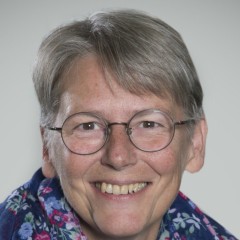You are not currently logged in. Please create an account or log in to view the full course.
Introduction
- About
- Transcript
- Cite
Child Language Acquisition
In this course, Professor Henriëtte Hendriks (University of Cambridge) provides an introduction to child language acquisition. In the first module, we provide an introduction to the study of language acquisition, before turning in the second module to explore three theories of child language acquisition: the behaviourist theory of language acquisition; the work of Noam Chomsky and the concept of universal grammar (UG); and the emergentist theory of language acquisition. In the six modules that follow, we go through each stage of language acquisition. In the third module, we explore the how children learn to segment the speech stream and begin to recognise individual sounds. In the fourth module, we think about how children start to produce sounds for themselves, and the extent to which 'babbling' is associated with language. In the fifth and sixth modules, we explore two theories for how children acquire words, before turning in the seventh module to consider the acquisition of syntax (or word order). Finally, in the eighth and ninth modules, we think about the acquisition of morphology, including the work of Roger Brown and Jean Berko's Wug Test.
Introduction
In this lecture, we provide an introduction to the study of language acquisition, focusing in particular on: (i) the definition of language acquisition; (ii) what we mean when we say "I know (e.g.) English" – what is it that we actually know?; (iii) the three stages of language learning; and (iv) the complexity of language learning and the lack of any clear answers.
Cite this Lecture
APA style
Hendriks, H. (2022, April 21). Child Language Acquisition - Introduction [Video]. MASSOLIT. https://massolit.io/courses/child-language-acquisition-hendriks
MLA style
Hendriks, H. "Child Language Acquisition – Introduction." MASSOLIT, uploaded by MASSOLIT, 21 Apr 2022, https://massolit.io/courses/child-language-acquisition-hendriks

